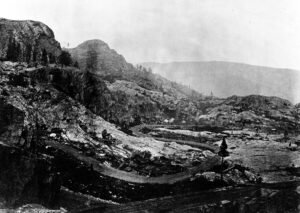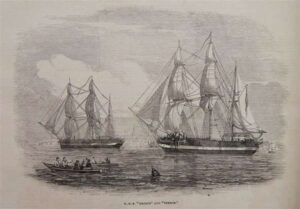Top 5 Most Tragic Deaths in the History of Exploration
Throughout human history, the urge to explore uncharted territories has driven people to take unimaginable risks. While exploration often leads to groundbreaking discoveries, it can also come at the ultimate cost: human life. Here, we recount five of the most tragic deaths in the history of exploration—stories of bravery, ambition, and heartbreaking loss.

1. Robert Falcon Scott – Death on the Return from the South Pole (1912)
British naval officer Robert Falcon Scott dreamed of being the first man to reach the South Pole. In 1910, he led the Terra Nova Expedition to Antarctica. Braving temperatures below -40°C, raging blizzards, and relentless exhaustion, Scott and his team finally reached the South Pole in January 1912, only to find that Norwegian explorer Roald Amundsen had beaten them by five weeks.
The return journey proved disastrous. Supplies ran low, frostbite and injuries set in, and one by one, his team members perished. Lawrence Oates famously walked out into a blizzard to sacrifice himself, hoping to give the others a chance. Ultimately, Scott and his remaining companions died from cold and starvation. Months later, their bodies and Scott’s poignant diary were found, bearing testament to their bravery and suffering.
2. The Donner Party – Starvation and Cannibalism in the Sierra Nevada (1846–47)
In 1846, a group of 87 pioneers known as the Donner Party set out for California, seeking a new life. They chose an untested shortcut called the Hastings Cutoff, which led to severe delays and hardships. As winter closed in, they became trapped by heavy snowfall in the Sierra Nevada mountains.
Facing starvation and extreme cold, the group resorted to cannibalism to survive. Out of 87, only 48 made it to California. The tragedy of the Donner Party serves as a grim reminder of how desperation can drive humans to unimaginable choices.

3. Sir John Franklin – The Doomed Arctic Expedition (1845)
In 1845, Sir John Franklin embarked on a British expedition to discover the fabled Northwest Passage. Commanding two ships, HMS Erebus and HMS Terror, Franklin sailed into the Arctic, never to return.
The ships became icebound. Food supplies deteriorated, scurvy and lead poisoning spread, and the crew abandoned the vessels to trek across the barren ice. Rescue missions found relics and human remains, suggesting cannibalism occurred during their final desperate days. Recent discoveries of the wrecks have shed light on this chilling historical mystery.

4. Jean-François de Galaup, Comte de Lapérouse – Lost at Sea (1788)
French explorer Jean-François de Lapérouse set sail in 1785 to chart unknown areas of the Pacific. After successful explorations across the globe, his expedition mysteriously vanished after leaving Botany Bay, Australia, in 1788.
Later investigations revealed that his ships had wrecked near Vanikoro Island (in today’s Solomon Islands) during a cyclone. Survivors were stranded, but without rescue, they eventually perished. Lapérouse’s disappearance remained an enduring mystery and a tragic loss to the age of exploration.

5. Dian Fossey – Murder in the Mist (1985)
American primatologist Dian Fossey dedicated her life to studying and protecting mountain gorillas in Rwanda. Her efforts made her a fierce enemy of poachers and wildlife traffickers. She destroyed snares, confronted poachers, and advocated fiercely for conservation.
On December 26, 1985, Fossey was found murdered in her cabin with fatal injuries to her head. Though her killer was never officially identified, many believe she fell victim to the very criminals she fought against. Her work, immortalized in her book Gorillas in the Mist, continues to inspire wildlife conservationists worldwide.
Conclusion
These tragic tales reveal the hidden cost of human exploration. Behind every great discovery often lies immense hardship, suffering, and sacrifice. As we celebrate the courage of explorers, we must also honor their memories by recognizing the dangers they faced and the ultimate price they sometimes paid.
Interested in more amazing journeys? Read our article on The Greatest Expeditions in Human History.